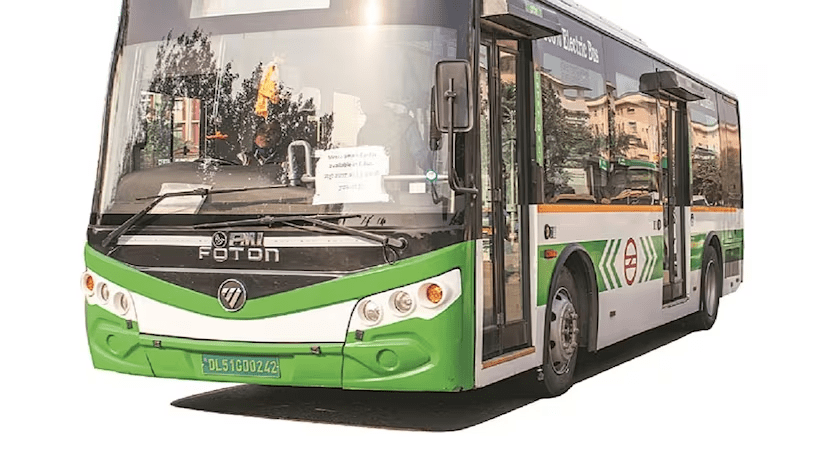By 2025, 80% of the capital city’s buses will be electric: Chief Minister Arvind Kejriwal
Delhi is fast emerging as the first metro to adopt electrification of public transport. The State government aims to rapidly transform its public transport to reduce vehicular pollution, which constitutes 30 per cent of the national capital’s pollution.
At present, the city has around 7,400 public buses. On Tuesday, Delhi Transport Minister Kailash Gahlot announced that the State government will add 400 e-buses to its fleet. Besides, Delhi Chief Minister Arvind Kejriwal said that Delhi has 800 e-buses, and their target is to increase this to 8,000 e-buses by 2025, which means 80 per cent of city buses by 2025 would run on electric.
Delhi can act as an apt example in India as it was recently judged the 35th best city globally for public transport by the Urban Mobility Readiness Index by Oliver Wyman Forum. It is also among the few States with high EV adoption and targets to have 1 out of every 4 vehicles sold by 2024, to be an EV.
‘Roping in private sector’
However, urban transport in Delhi needs comprehensive policy overhaul, a senior government official said, adding that this is critical as government chalks out initiatives for clean energy transition, especially through e-buses, and with private sector being roped in for operating transport services.
“Private sector is being involved without addressing the larger reform issues. The Road Transport Corporation Act is the only old legislation that is being used. A new age legislation that draws contours of the sector reforms is important,” the official emphasised.
The exercise of electrifying urban transport must be approached as a coherent system, which embraces vehicles, charging infrastructure, operation, end users and financial sustainability, he explained.
Delhi has placed orders for around 6,000 e-buses. Under Grand Challenge, Tata Motors has got the order for providing 1,500 e-buses, which is under execution. Besides, under the National Electric Bus Programme, it has issued letters of acceptance for about 4,000 buses.
Evolving dynamics
A fundamental shift is taking place in the process in which city bus operations will be conducted. Earlier, the State Transport Undertakings (STUs) used to buy and run buses.
Now, there is a shift on both sides of the spectrum with STUs becoming contract managers and private sector operating the buses, another senior government official said.
On the original equipment manufacturer (OEM) or bus manufacturer front also, there is a shift. Earlier, they manufactured and sold buses, but now, they are tied down for the entire duration of the contract.
“The challenge is to dispel OEMs’ worry about payment security considering that most of the STUs are cash strapped. Another is dependency on farebox revenue. The architecture of the reform process needs to be conceptualised,” the official stressed.
For instance, how does one benchmark performances of multiple bus operators in Delhi and what will be the role of the Delhi Transport Corporation (DTC). Another challenge is that with multiple e-bus operators, there is no incentive for increasing ridership as remuneration is one per km basis. Some incentives need to be built in for increased ridership.
Separating responsibilities
An alternative worth considering is the Shenzhen model, where there is a separate company for charging infrastructure, e-bus owner and e-bus operator.
A financial aggregator can play the role of the bus owner. Operator will provide manpower and the final is a charging infrastructure provider which will electrify the bus depot.
The benefit of this model is that charging infrastructure is capital intensive, but it is currently sub optimally utilised as its only role is to charge the buses. It can be opened up for users such as e-cab fleets, etc., which will prevent balance sheets from becoming over leveraged.
The Shenzhen Model
World Bank’s Transport Global Practice prepared a report on electrification of urban transport based on a case study of the Shenzhen Bus Group Company (SZBG). Shenzhen has China’s, and the world’s, first and largest fully electric bus and taxi fleets.
The SZBG introduced a financial leasing model that used a financial leasing company that purchases and owns vehicles and leases them to the SZBG with a lifecycle warranty for key parts offered by bus manufacturers. It takes ownership of the vehicles after the leasing period is over. Since the leasing period equals the total life of the buses, this arrangement turned the high-cost procurement into more manageable annual rental or lease payments.
The transition to electrification requires coordination and policy synergy across different levels of governments as well as different departments within the governments. Private players especially in vehicle manufacturing, charging, and new technology are also critical, the report emphasised.

